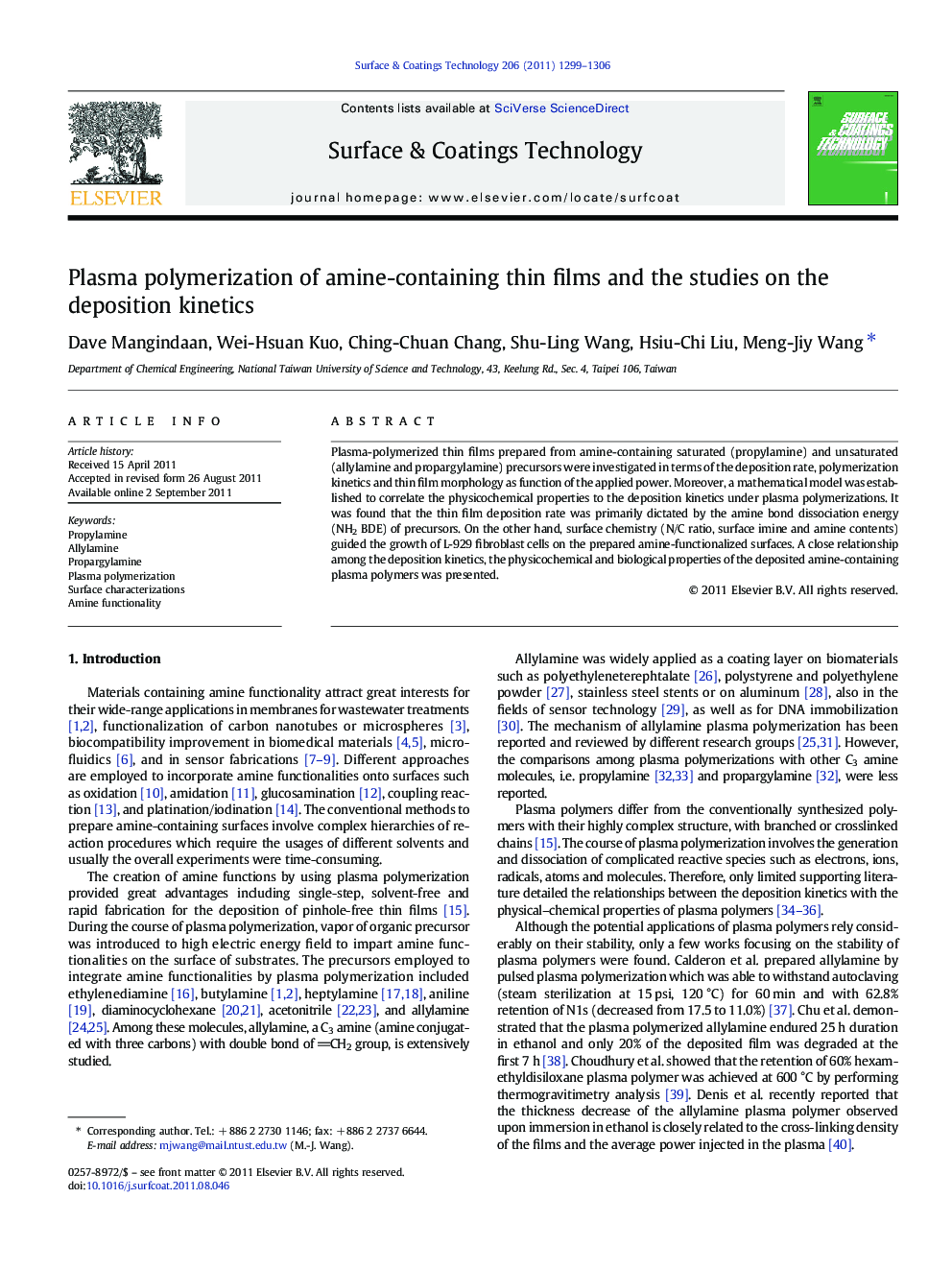| Article ID | Journal | Published Year | Pages | File Type |
|---|---|---|---|---|
| 1658728 | Surface and Coatings Technology | 2011 | 8 Pages |
Plasma-polymerized thin films prepared from amine-containing saturated (propylamine) and unsaturated (allylamine and propargylamine) precursors were investigated in terms of the deposition rate, polymerization kinetics and thin film morphology as function of the applied power. Moreover, a mathematical model was established to correlate the physicochemical properties to the deposition kinetics under plasma polymerizations. It was found that the thin film deposition rate was primarily dictated by the amine bond dissociation energy (NH2 BDE) of precursors. On the other hand, surface chemistry (N/C ratio, surface imine and amine contents) guided the growth of L-929 fibroblast cells on the prepared amine-functionalized surfaces. A close relationship among the deposition kinetics, the physicochemical and biological properties of the deposited amine-containing plasma polymers was presented.
► Amine-containing plasma polymers from propylamine, allylamine, and propargylamine. ► Investigation of the plasma polymerization kinetics and thin film morphology. ► The produced plasma polymers are highly stable for cell cultivation. ► NH2 BDE dictates the deposition kinetics for monomers with different structure. ► Surface chemistry (N/C ratio and imine content) rules the growth of L-929 cells.
